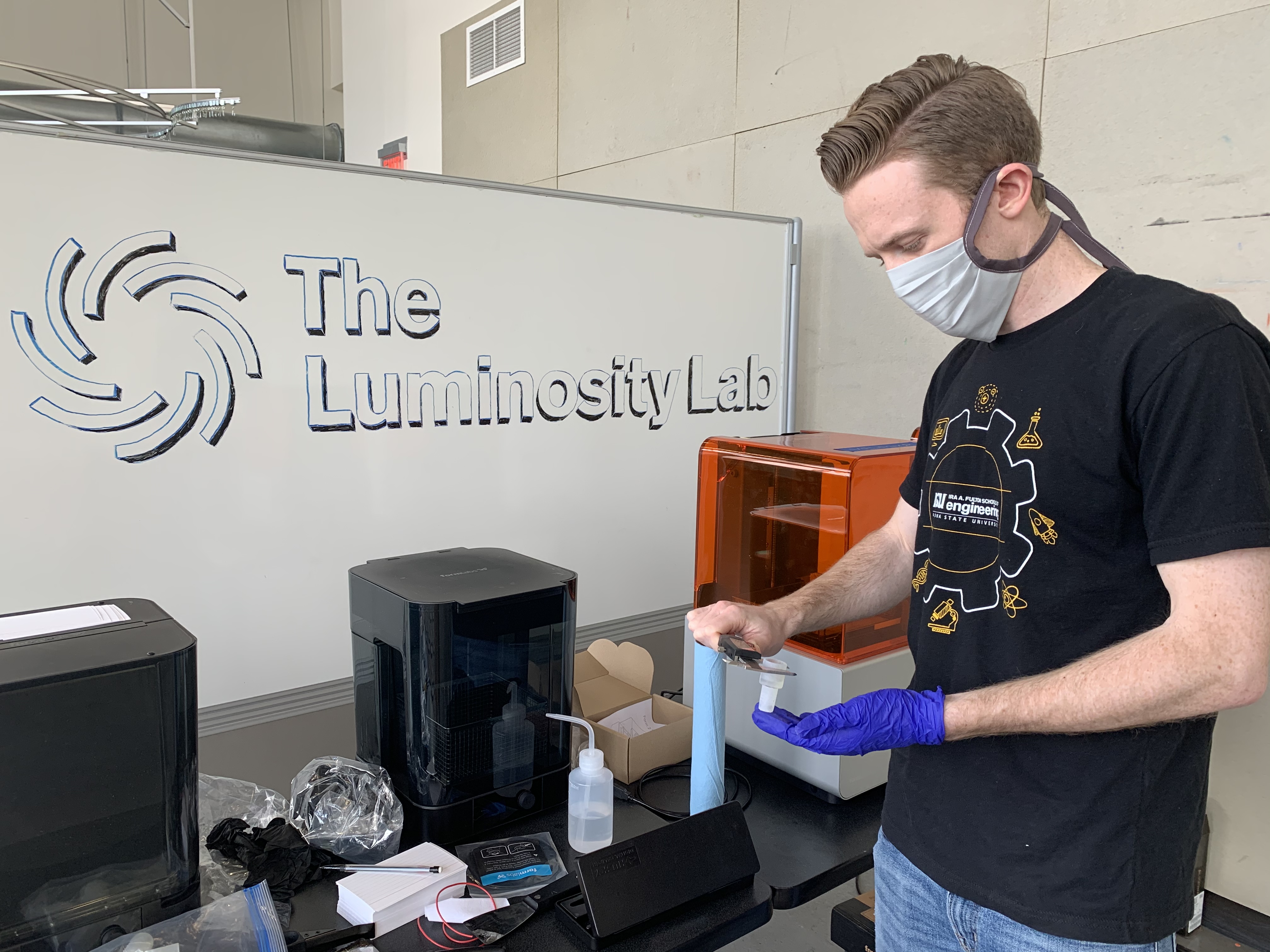Think Tank Drives Practical Innovation and Collaboration
ASU’s Luminosity Lab, a think tank, is expanding its efforts to create and implement real-world solutions for local health care, education, and energy challenges.

Mark Naufel, executive director of Arizona State University’s (ASU) Luminosity Lab, started the lab in 2016 when he was 24 and fresh out of graduate school. Perhaps that’s why he takes an innovative approach to running the think tank.
“My dream was to start a new model of innovation and discovery at universities and colleges—driven by students,” Naufel says.
Naufel recruited 15 ASU students from different disciplines, secured funding from the university president’s office, and challenged his team to identify unmet needs in society. From there, the students designed, developed, and deployed solutions.
Luminosity Lab now features 50 students per year, with an all-time high of 100 in 2019. They identify challenges and help develop solutions for healthcare, education, and energy.
Last spring, students launched the PPE Response Network in three weeks after hospitals and medical clinics throughout Arizona expressed their need for PPE. The Lab connected the facilities with people using 3D printers to produce PPE. “Our team created a 3D-printable mask that could be reused, and we worked with a corporate partner to get the filters for the masks,” says Naufel. “We delivered more than 16,000 PPE all over the state.”
After expanding Luminosity Lab at ASU, Naufel’s next step was taking it beyond campus. A 20-student Luminosity Lab in Ghana will launch in January and Naufel plans to have the Ghanaian students work with his students on projects.
Further expansion and collaboration
Another think tank recently launched at Lane College, an HBCU in Jackson, Tennessee, after Lane’s president visited ASU and learned about the Lab and its projects. “Our college doesn’t offer civil engineering, architecture, or design so we thought we could select a group of students to collaborate with Mark’s students and come up with some concepts,” says Greg Emery, instructor of business and scholar in residence for innovation at Lane.
Tools and ideas to transform education. Sign up below.
To start, Emery created an internship program in the fall of 2019 and six Lane students worked remotely with ASU students. “We have no businesses or colleges surrounding us, and our students need internships and experiences off campus, so this was a great way to provide that,” says Emery. At the same time, Naufel wanted to extend his concept so projects could have multiple college teams working together.
Emery plans to create his own innovation lab, possibly a think tank that tackles social issues. “We’ll create an interdisciplinary set of courses and have 10 to 20 students from different disciplines work in groups on various problems,” he says. The college, which has relationships with nearby FedEx and International Paper, will ask those and other companies to share problems; students can also tackle on-campus issues. “Our challenge will be taking it into social justice,” says Emery. “Rather than creating tangible objects, we might produce a paper to be presented at a conference or proposed legislation. We offer majors in religion and political science and want every student to have an opportunity to participate.”
Next year, the Lane Luminosity Lab hopes to increase to 20 students, expand the non-classroom components, and keep everyone engaged in projects. Emery is looking forward to collaborating with multiple institutions and including aspects of students’ lives that are most important to them. “The main thing I teach at Lane is that you always have to solve a problem,” he says. “An idea is just an idea if you can’t connect it to a problem and someone willing to pay to have that problem solved.”
Naufel agrees. “A lot of internships have low-level, repetitive tasks,” he says. “When we engage students through the Lab they work on a complex project, which we need in this generation.”
